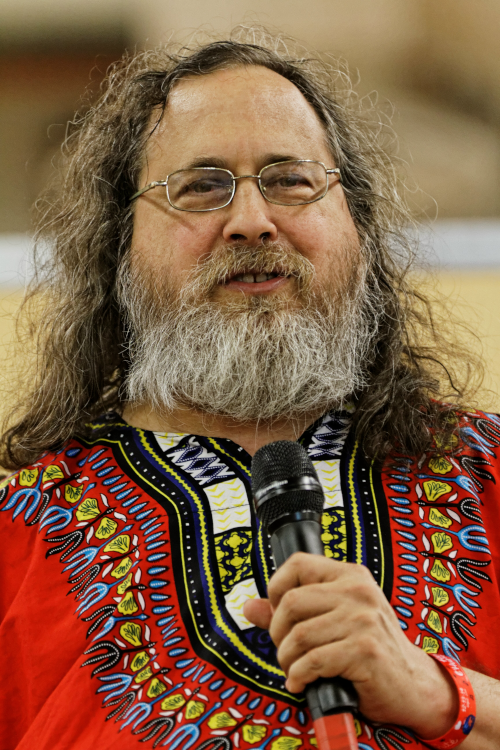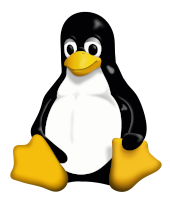GNU and Linux
Screenshot
of an approximation of a Unix graphical desktop and applications
from the late 1980's to the early 1990's
Image retrieved from
Wikimedia
where it was uploaded under the
X11 License
From Wikipedia “Linux is a family of open source Unix-like operating systems based on the Linux kernel, an operating system kernel first released on September 17, 1991, by Linus Torvalds. Linux is typically packaged in a Linux distribution.”
In 1991 Linus Torvalds, a computer science student at the University of Helsinki purchased a computer for his personal use that came with a copy of MS-DOS the precursor to the Windows operating system made by Microsoft. Torvalds wasn’t satisfied with MS-DOS and wanted to use a Unix operating system like he was accustomed to at the university. But when Torvalds tried to obtain a copy and license of Unix he found that the cheapest version of Unix cost $5000USD. And so he started a project that eventually turned into a full kernel, the Linux kernel.
Later the same year on the 25th of August he announced the system on Usenet a precursor of sorts to the bulletin board system and internet forums or message boards, posting his message to the newsgroup ‘comp.os.minix’.
"Hello everybody out there using minix -
I'm doing a (free) operating system (just a hobby, won't be big and professional like gnu) for 386(486) AT clones. This has been brewing since april, and is starting to get ready. I'd like any feedback on things people like/dislike in minix, as my OS resembles it somewhat (same physical layout of the file-system (due to practical reasons) among other things).
I've currently ported bash(1.08) and gcc(1.40), and things seem to work. This implies that I'll get something practical within a few months, and I'd like to know what features most people would want. Any suggestions are welcome, but I won't promise I'll implement them :-)
Linus ([email protected])
PS. Yes - it's free of any minix code, and it has a multi-threaded fs. It is NOT portable (uses 386 task switching etc), and it probably never will support anything other than AT-harddisks, as that's all I have :-(.
— Linus Torvalds"

Image of Linus Torvalds, creator of the Linux kernel
Image retrieved from
Wikimedia
where it was uploaded under the
Creative Commons Attribution-Share Alike 3.0 Unported
But if Torvalds couldn’t attain a copy of Unix and he wasn’t running MS-DOS on his computer, then what was he running and what OS did he use to write Linux and why didn’t he just use this OS for his own personal use? The answer to this is MINIX, an OS made by Andrew Tanenbaum in 1987 for educational use. This meant that the source code was available for seeing how certain things work in the OS, say for example a class on OS fundamentals. But this also meant that you weren’t allowed to change and redistribute the OS. In addition the OS didn’t quite take advantage of the features of Torvald’s computer. But the biggest problem with MINIX was that in being educational Tanenbaum didn’t actively develop the OS and didn’t want to do anything further with the OS.
But that still doesn’t fully answer the question, why didn’t he just use MINIX for his own personal use? To answer this we have go back to 1983, the start of the development of GNU’s not Unix! (GNU). The GNU Project was started by Richard Stallman and he announced the project in 1983 on September the 27th to the newsgroups net.unix-wizards and net.usoft. Development on the project began on January the 5th, 1984 after Stallman had quit his job to allow him to be free of any ownership disputes from his employer.
Even though the fact that GNU’s not Unix is highlighted by the recursive acronym of the project one of it’s goals is to be a Unix-like system because of its popularity and because Unix was modular so each piece could be worked on individually. This along with GNU being partly written in C meant that certain utilities like the TeX typesetting system and the X Window System could be ported to GNU and wouldn’t have to be written from scratch. As time progressed GNU’s development was getting more and more complete, apart from the kernel called GNU Hurd whose development had lagged behind the rest of GNU.

Image of Richard Stallman, founder of the GNU project
Image retrieved from
Wikimedia
where it was uploaded under the
Creative Commons Attribution-Share Alike 3.0 Unported
This is where Linux stepped in, originally Linux was distributed with a restriction on commercial activity but that changed in the middle of December 1992 when he published version 0.99 under the GNU General Public License, a license that Stallman had made to fit the GNU Project. From here Torvalds and GNU developers worked to make Linux compatible with the other GNU software and GNU and Linux started to get released together in one software package as an entire OS.
This is where Linux stepped in, originally Linux was distributed with a restriction on commercial activity but that changed in the middle of December 1992 when he published version 0.99 under the GNU General Public License, a license that Stallman had made to fit the GNU Project. From here Torvalds and GNU developers worked to make Linux compatible with the other GNU software and GNU and Linux started to get released together in one software package as an entire OS.
From there as Linux got more popular companies, users, and developers started to contribute to the development of the software until we reach today where Linux is the most popular web server operating system and Android, a Linux based smartphone OS is the most popular smartphone OS.
References

Tux, Linux's Mascot
Image was made by
[email protected] Larry Ewing
and
The GIMP
Image retrieved from
Wikimedia
where the updated version was uploaded under this
README
by Simon Budig
And a futher updated version which is the one used in this
website was uploaded under the
Creative Commons CC0 1.0 Universal Public Domain
Dedication
by Garret LeSage.
This work includes material that may be protected as a
trademark in some jurisdictions.
